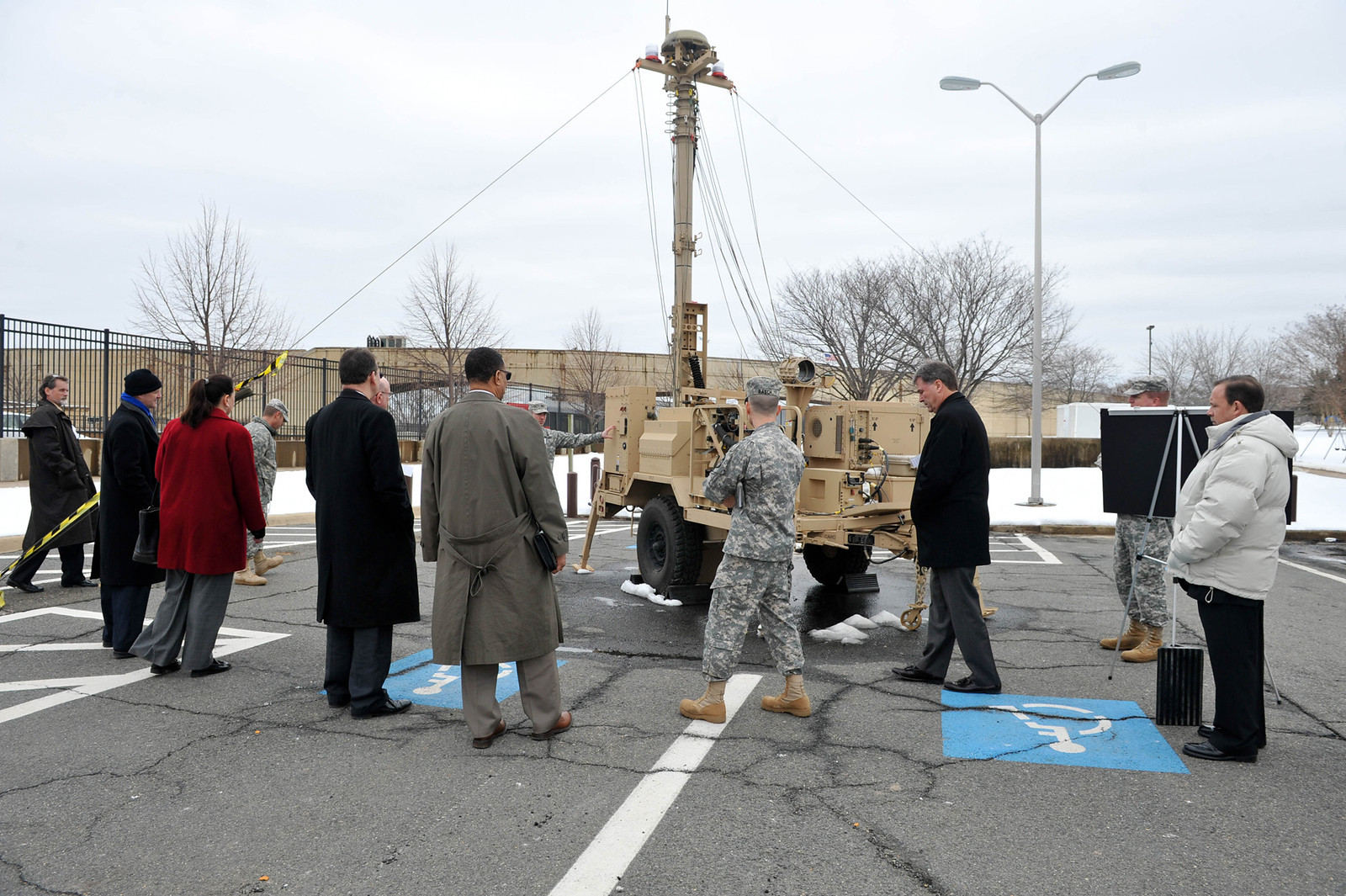
Pentagon demo shows leadership how the Integrated Air and Missile Defense system will revolutionize Army Air and Missile Defense
By Maj. Scott Gill and Mr. Dave Witteveen
The Integrated Air and Missile Defense Project Office (IAMD PO) and the Fires Center of Excellence held an “Immersion Day” at the Pentagon, March 18-19, to demonstrate the Army Integrated Air and Missile Defense (AIAMD) concept with the IAMD Battle Command System (IBCS).
“AIAMD will fundamentally change the way Army Air and Missile Defense (AMD) forces organize, train, and fight, as we componentized sensors and shooters into an integrated network that provides unprecedented capability and flexibility to our commanders in the field,” said Col. Robert Kelley, TRADOC capability manager for the Army AMD Command (TCM-AAMDC).
AIAMD integrates Air Defense Artillery (ADA) sensors, weapons, and a common mission command across a single Integrated Fire Control Network (IFCN). IFCN, in turn, provides a “plug and fight” capability that supplies distributed battle management functionality to enable network-centric operations, eliminating the current system-centric operational and communication stovepipes. That plug-and-fight capability provides a major step forward because of the unlimited potential to integrate future sensors and weapons onto IFCN.
The IBCS is the common mission command element of the AIAMD that provides the functional capabilities to control and manage the AIAMD sensors and weapons via an IFCN operated from the engagement operations centers. IBCS enables the ADA Warfighter to achieve mission objectives in a modular open system architecture environment by providing the capability to control the fight across all sensors and shooters on the IFCN, eliminating “single points of failure,” providing the potential for greater integration of fires, and the ability to fully leverage joint platforms.
“The integration of sensors and shooters under a networked common mission command enables the ADA warfighter to defend the airspace with a holistic approach, using the capabilities of all systems across the span of control of the network, versus our legacy posture where systems do not operate synergistically by their original design,” said Col. Robert Rasch, project manager (PM) for IAMD.
The AIAMD project, under Program Executive Office Missiles and Space (PEO MS), is critical to the ADA warfighter as well as the PEO MS portfolio. Development testing begins in FY15 with limited user testing in early FY16. The first units should get equipped by FY17 and the system will achieve initial operating capability by FY18.
IMMERSING DECISION-MAKERS
The Immersion Day event—which, because of snow, became two days—demonstrated the IBCS software integrated with early hardware, and showcased its capabilities as it proceeds toward the IAMD developmental test (DT) program. The Immersion Day provided an opportunity for strategic decision-makers to see the IBCS in action before to the FY16 program objective memorandum (POM) mid-year review.
It provided senior leaders the opportunity to put hands on the same hardware that will be used for DT as well as to experience an operational IBCS Engagement Operations Center (EOC) and associated Integrated Collaborative Environment (ICE), a quick-erect tent that provides a collaborative environment for staff planning and mission execution. Each participant put eyes and hands on the IBCS EOC, the ICE, and an IFCN relay. This was the first time that most visitors had seen the actual IBCS components live rather than depicted on briefing slides.
Upon arrival, the senior leaders received a briefing on the IBCS hardware prior to the operational IBCS demonstration. Capt. Jonathan Hathaway and Capt. Jeffery Blacksher, assistant product managers with the Integrated Fire Control Product Office, provided briefings on the IFCN relay. Maj. Beau Barker, an assistant product manager for the EOC Product Office, provided an overview of the EOC and ICE.
Following the IBCS hardware briefs, Maj. Jason Carney, IAMD assistant project manager for System of Systems Integration, briefed the Common Warfighter Machine Interface (CWMI) and the Integrated Defense Designer (IDD), the planning tool that will be used with the IBCS. The CWMI provides warfighters with a computer workstation and software that is common across echelons but is configurable to meet the needs of each individual staff sections. Staff briefed personnel on how to use IDD to create plans for future operations, such as how to build the area of operations, set enemy and friendly force locations, emplace equipment, and use the advanced planning tools that allow the commander to set his priorities for protecting assets, while the system provides emplacement options to best support the mission and optimize the communications network.
IAMD personnel then conducted simulated missions showing incoming targets and how the different CWMI windows could readily track the target from notification of a target to target kill assessment. Immersion Day participants were able to see how targets receive a track number, target trajectory, predicted impact locations, interceptor launches and estimated points of impact.
At the conclusion of the IAMD Immersion Day event, a total of 64 senior military and civilian leaders received IAMD briefings, toured the IBCS equipment, and viewed simulated operational missions. Representatives attended from various Offices of the Secretary of Defense; Joint Staff; Army Staff; and ASA(ALT).
“It was a great event for the combined government and Northrop Grumman team. The IAMD program got to demonstrate its capabilities to the larger DOD strategic leadership,” Rasch said.
- Subscribe to Access AL&T is the premier online news source for the Acquisition, Logistics, and Technology (AL&T) Workforce.







